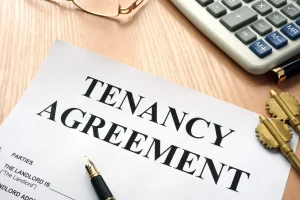When it comes to how to perform basic plumbing repairs, there are many things to take into account. These include slow drains, clogged drains, corroded valve seats, and leaky pipes. If you have any of these problems, it is important that you have them corrected right away.
Leaky pipes
A plumbing leak can cause significant damage to a home. Leaking pipes can damage your kitchen and bathroom, and they may even create unhealthy conditions for mold and mildew. In addition, they can cause musty odors near your water heater. If you suspect you have a leak, contact a professional plumber right away. They have the tools and knowledge to diagnose the problem and fix it right the first time.
One option for stopping a leak is to use duct tape. The tape should be placed in the hole of the pipe and firmly wrapped around it. Make sure the tape is applied to a smooth surface. This will ensure a good seal.
Clogged drains
Clogged drains are a common plumbing problem. However, they can also be a sign of a bigger plumbing issue. If you don’t know what causes them, you can end up with serious damage to your home’s plumbing. There are several ways to diagnose and fix clogged drains.
To unclog a clogged drain, you can use baking soda, vinegar, or hot water. You may also need to use a plumber’s snake.
A plumber’s snake is a long, flexible wire with teeth that can help you clear clogged pipes. They can also be used to clean sinks and toilets.
Slow drains
When a sink or toilet drains slowly, it is a sign that something is going wrong. It is important to determine the cause of the problem before it becomes too serious.
There are a few simple ways to get your drains running again. Some of these methods can be done at home, while others require professional assistance.
Slow drains can be caused by a number of things. Soap, grease, hair, and other waste can build up and form a clog. If left unchecked, these buildups will gradually impede the flow of water.
Corroded valve seat and washer
If you’re having leaks at your faucet, the culprit may be a damaged valve seat and washer. Using specialty tools, you can repair your leaks.
The valve seat is the part of the faucet that connects the spout and faucet. Over time, sediment can build up on the seat. This sediment can corrode the seat. It can also cause a spout leak.
One solution to this problem is to replace the seat and washer. To do this, you’ll need to take the faucet apart. That means removing the handle and the stem. You’ll need a special wrench to remove the seat.
Drain clearing and cleaning
If you have a sink or toilet that is frequently backing up, you probably have a drain clog. This is a common problem, and most plumbers offer their customers a drain clearing service.
A clog can be caused by many things, including hair, feminine products, soap scum, food waste and fats. In order to keep your drains running smoothly, it’s important to perform an annual cleaning.
Clogs in the drains of your home can be frustrating. They can cause the water to back up into your sink or toilet, and even cause you to stand in a pool of water while taking a shower. However, these are usually temporary problems. But if they are persistent and occur repeatedly, you may have a bigger issue.
Copper pipes
If you have a copper pipe in your home, it’s important to repair it before it becomes a serious leak. If you do, it can save you money and protect your home from damage. The good news is that there are a few simple ways to fix a leaky pipe without hiring a plumber.
Before attempting to perform any repairs, you must shut off the main water valve. This will prevent the water from flowing through the system, which can cause further damage.
You should also check your plumbing for any signs of corrosion. Some common signs are foul odors, color changes, and rust.
Low water pressure
Keeping your home’s plumbing in top shape can help you avoid problems with low water pressure. However, there are times when you might need to perform basic plumbing repairs to fix the problem. In these situations, you’ll need to know what to look for and how to fix it.
The first step you’ll want to take is to determine the cause of the low water pressure. There are several potential reasons for this problem, including leaking pipes or leaky fixtures.
Depending on the issue, you might need to have a professional plumber come in to inspect your system. They can check for leaks and make adjustments that improve the water pressure.




